The COVID-19 antigen test–what is it, and how do you take it? Learn more in this article.
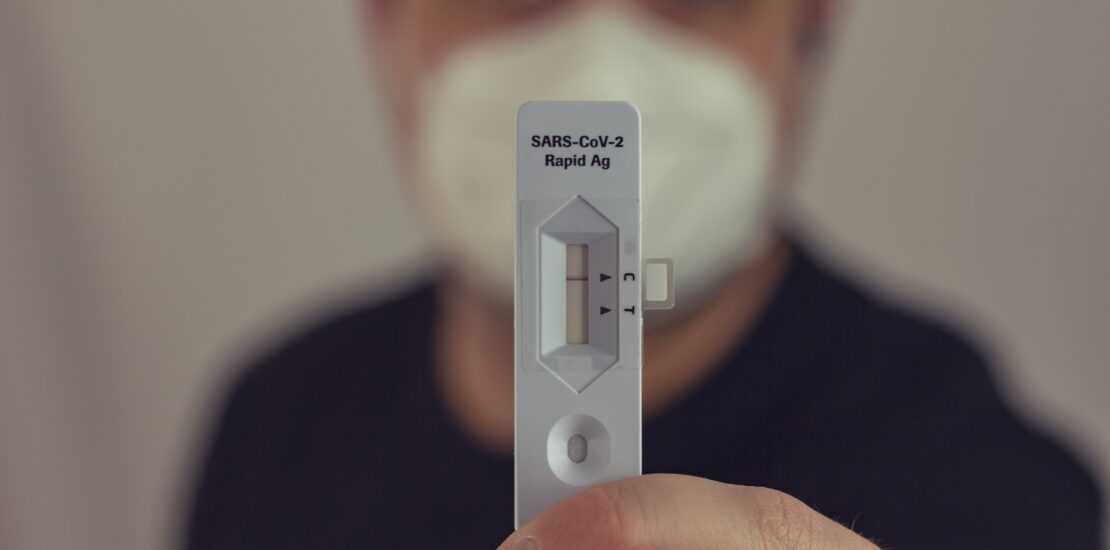
Disclaimer: I am not a professional translator or a medical expert. The information in this article is meant to be, at most, a reference. Please use your own discretion when taking any test.
What’s The Difference Between A COVID-19 PCR, Antigen, and Antibody test?
Japan breathes a sigh of relief as we finally come out of the extended “state of emergency,” which was originally set to lift in May of 2020 but finally dissolved on September 30, 2021. Have you taken advantage of your newfound freedom to get out and enjoy Tokyo, or to go out to a restaurant after 6 p.m.? Life is heading to post-new normal, but still there remain vestiges of the lockdown, namely COVID-19 tests. For travel and work purposes, we may still find occasion to take one of the three major types of COVID-19 tests: the PCR (polymerase chain reaction), antigen, and antibody tests. You’ve probably heard of all of these, but do you know the difference?
PCR Test
How: nasal swab
When: required when you enter Japan from another country
What: detects the presence of the COVID-19 virus
How long: takes about an hour to produce results
Antigen Test
How: nasal or throat swab
When: required by some workplaces after close contact with an infected person
What: detects COVID-19 protein fragments that are still contagious
How long: takes about 20 minutes to produce results
Antibody Test
How: blood test
When: can be useful in determining whether or not you have been exposed to COVID-19
What: detects the presence of antibodies
How long: takes 15-20 minutes, but may requires a couple days for results to come back from the lab
As you can see, different tests are better suited to different situations. In this article, we will focus on the rapid antigen test, which can be ordered online at this site (Japanese). Since September 27, pharmacies are also allowed to carry them.
How to Take A COVID-19 Rapid Antigen Test At Home
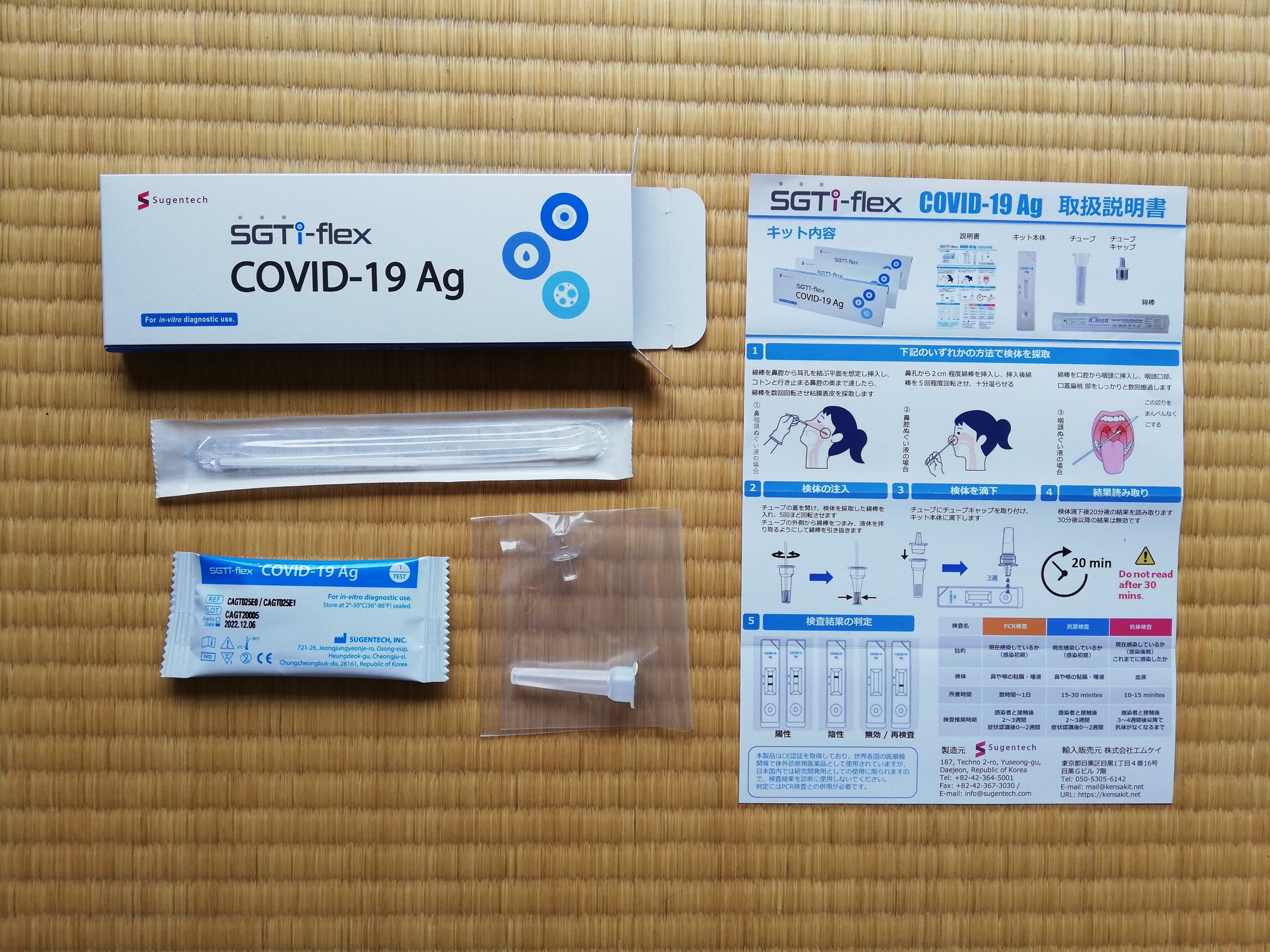
Your COVID-19 Rapid Antigen test kit comes in a slim little box that includes instructions in Japanese, a cotton swab, a sealed test strip, a sealed test tube containing liquid, and a cap.
There are three ways to take this test: a deep nasal swab, a shallow nasal swab, or a throat swab. If you have a strong gagging reflex, I would recommend going with one of the two nasal swabs. If you have had a flu test, you will be familiar with the deep nasal swab.
To begin, open the box and remove the contents. It will help you in the next steps if you go ahead and open the test strip package and take the test tube and cap out of the bag but don’t unseal the test tube yet.

Remove the cotton swab from its packaging and insert it into your nostril as far as you can, until you feel it bump into the back of your nasal cavity. Rotate a few times for a thorough swab of the membrane. Remove carefully.
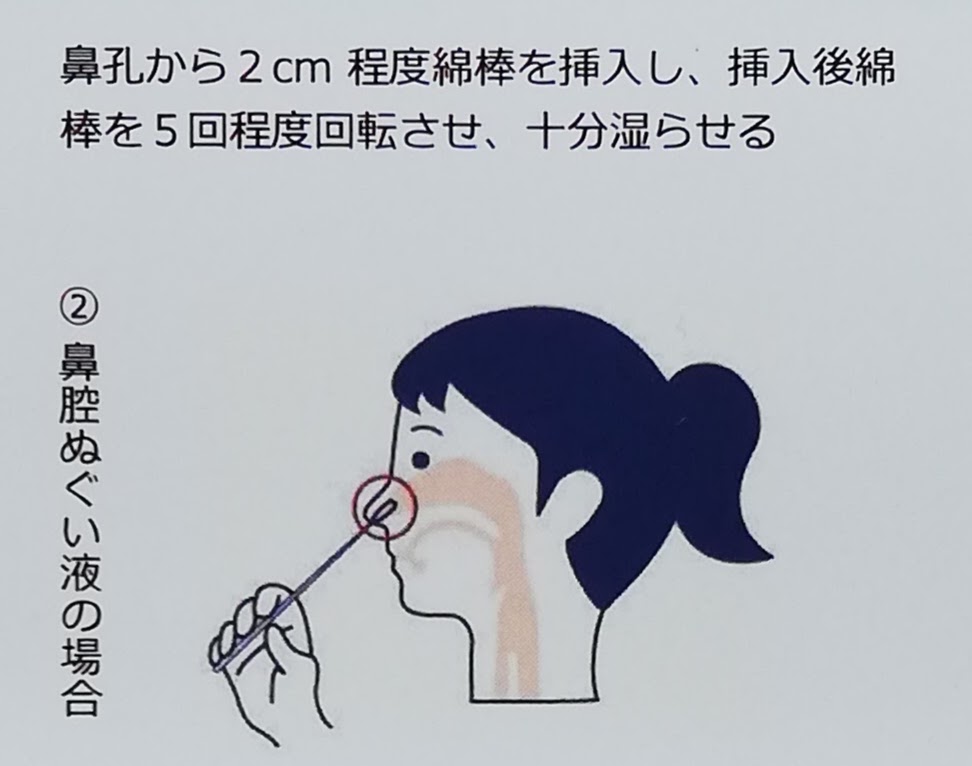
Remove the cotton swab from its packaging and insert the cotton swab into your nostril about 2 cm from the opening and rotate about 5 times, until thoroughly moistened. Remove carefully.
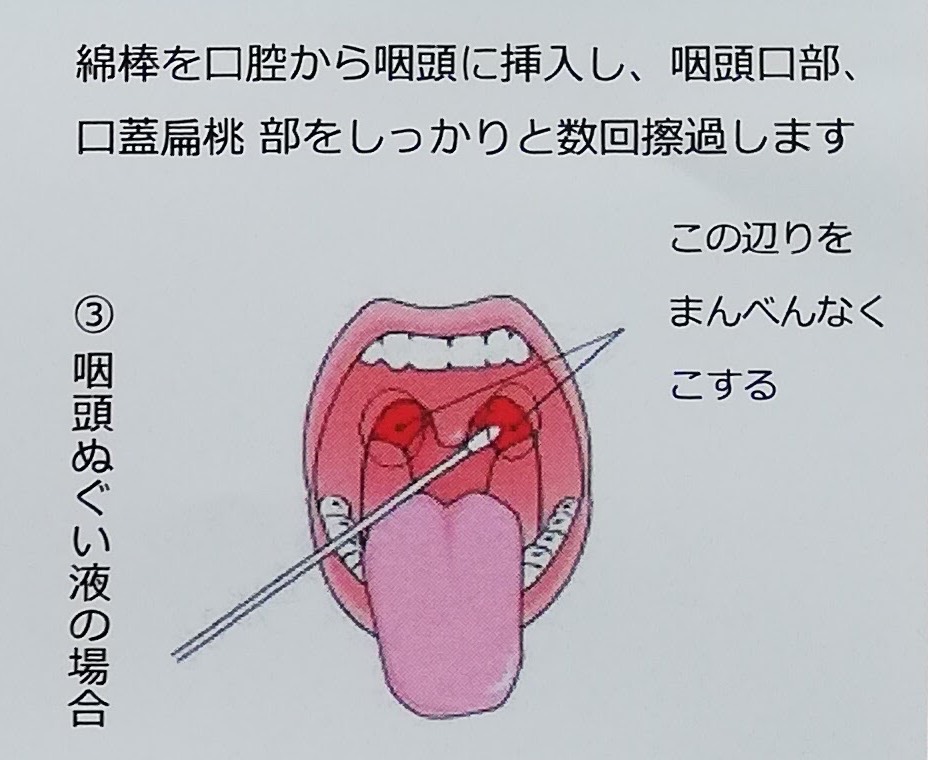
Remove the cotton swab from its packaging and insert the cotton swab into your mouth. Go for the light pink area at the back of your throat near your tonsils. Swab thoroughly, but take care, as this area can be quite sensitive! Remove.
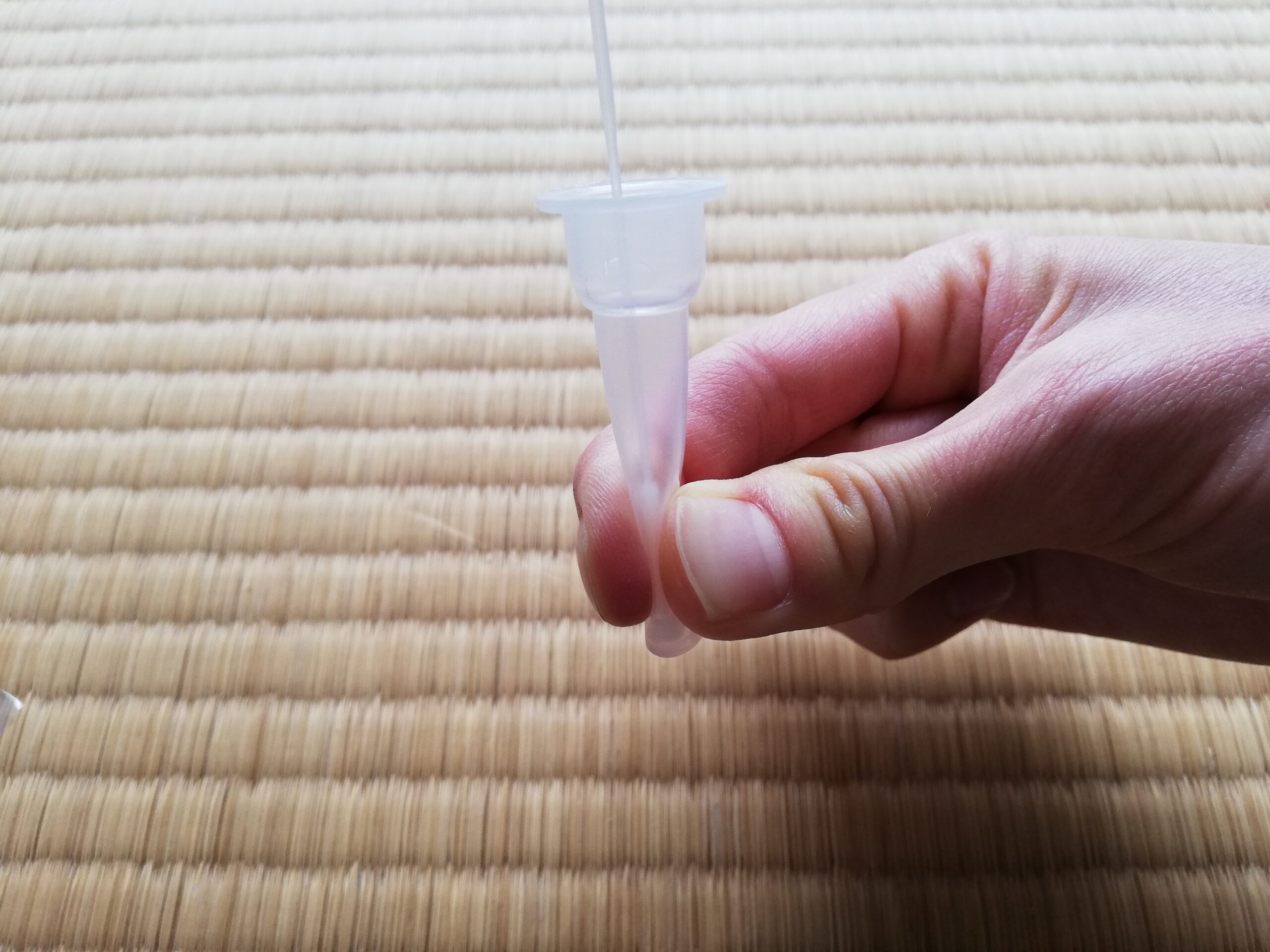
Peel open the test tube carefully and insert the cotton swab you just used into the liquid contained inside. Swirl the cotton swab around five times, and then remove it while squeezing the tip of the test tube. You want to squeeze out what was on it. Note: If there is not enough liquid in the test tube to produce three drops, you may have a faulty kit and need to call the company for a refund.
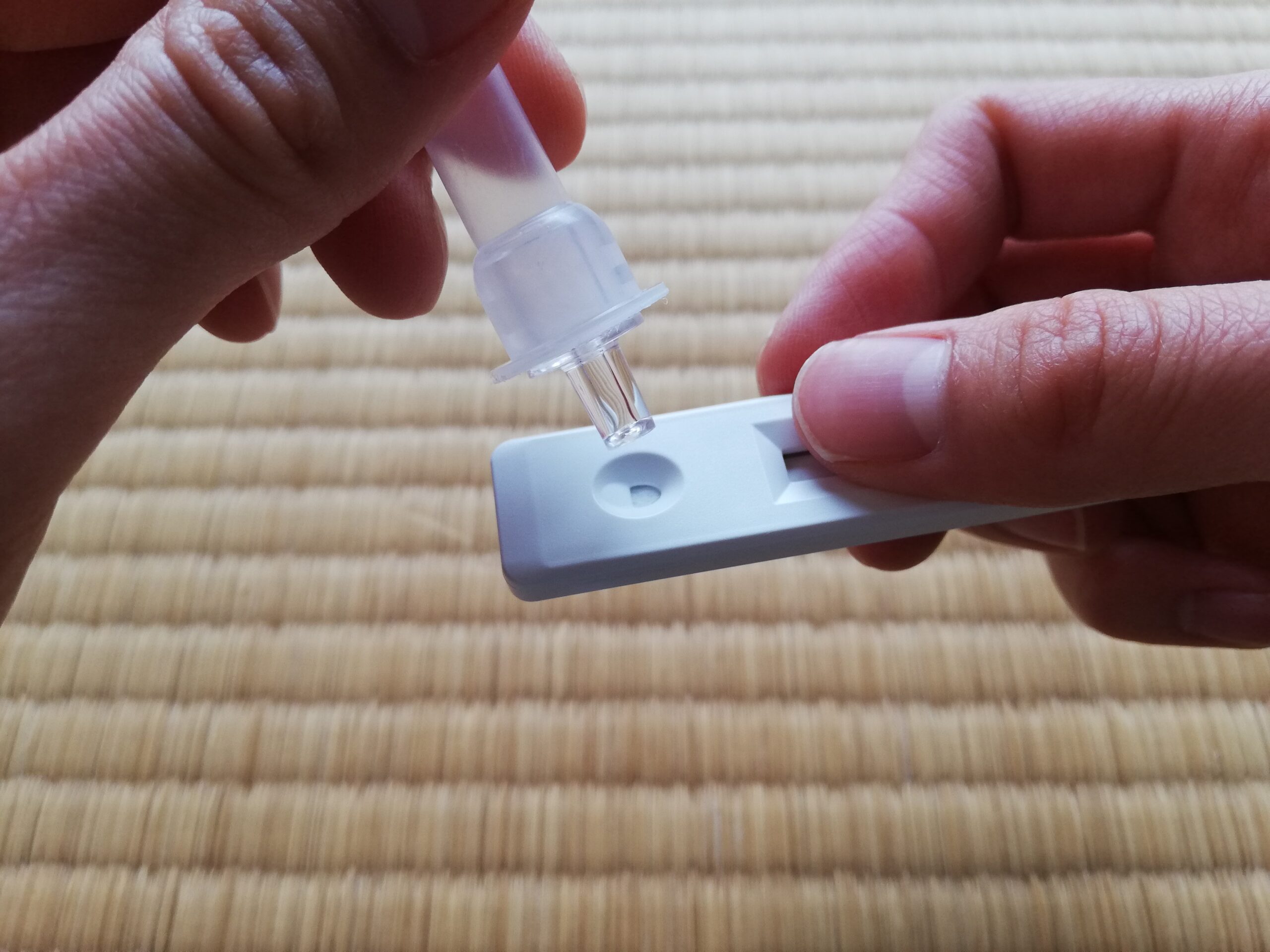
After you throw away the cotton swab, put the cap on the test tube with the dropper facing up. Add three drops to the area designated on the test strip.
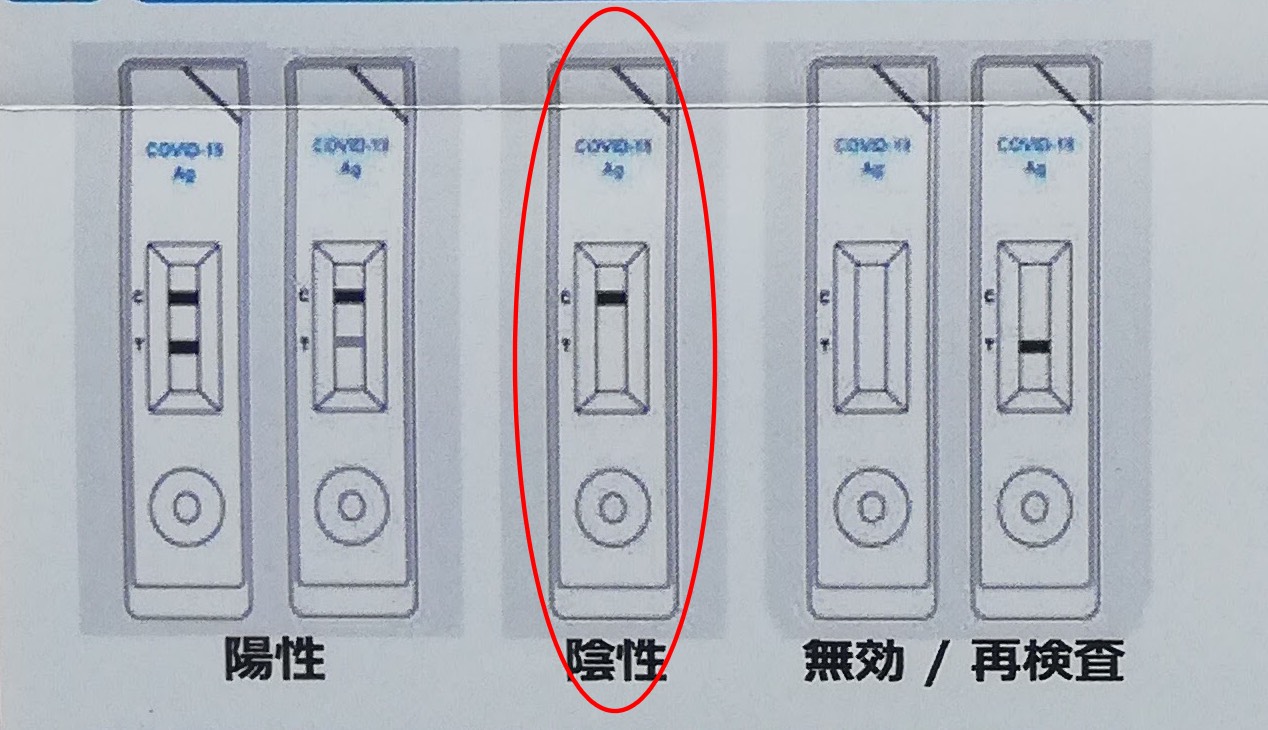
Set a timer and wait 20 minutes before checking the test strip. (Note that the test will no longer be accurate after 30 minutes.) A dark bar at both C and T, or a dark bar at C and a light bar at T mean you tested positive. A single dark bar at C means you tested negative–this is what you want! No bar, or a dark bar at T means the test was ineffective or that you need to re-test.

That’s it! It’s easy to take and interpret the rapid antigen test, and it’s fairly affordable. I hope these instructions will help reduce your stress as you decipher the instructions and carry out this somewhat unpleasant task. Testing and quarantining is a part of our “normal” in Japan right now, but I think we are all looking forward to the day when we can go to work and board planes without a mask, medicine, or any kind of test. See you then!



